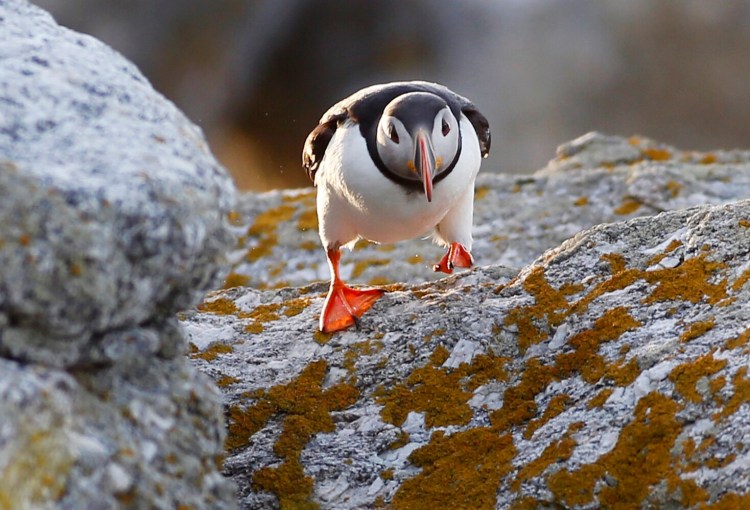The Atlantic Puffin is one of the most iconic birds of our state. Belonging to the auk family (the Alcidae), this species is one of six regularly occurring alcids in Maine.
In the next few columns, I will be reviewing the highlights of the National Audubon Society Christmas Bird Counts completed recently in Maine. Alcids always add spice to a Christmas Count. In preparation for those highlights, let’s review the Maine alcids.
Alcids are diving seabirds, feeding on fish and drifting marine invertebrates (the zooplankton). Alcids have webbed feet, but they power themselves through the water with their wings. Alcids are on the horns of a dilemma for wing shape. Long wings are great for efficient flying but too difficult to move through the water. So, alcid wings are fairly short. Some have described alcids in flight as giant bumblebees.
All the Atlantic alcids nest on rocky shores, often on sheer cliffs, where nest predation by mammals is thwarted. After the season, many alcids go offshore and will pass the winter out of sight of land. Storms or strong on-shore winds may delight birders by pushing alcids close to shore.
The Black Guillemot is the coast hugger of the group. They nest in Maine and spend the winter near shore. They are striking birds with black plumage above save for prominent white wing patches. Guillemots sometimes use a foot to preen themselves, affording a look at their bright red legs and feet. Very striking!
The Razorbill mostly nests to north of us but is the second most likely alcid to be seen from shore in the winter. I vividly remember seeing at least 500 of these striking birds one March at West Quoddy Head in Lubec. The large bill with a white transverse stripe is distinctive.
Atlantic Puffins nested historically in Maine but the nesting populations were extirpated on all offshore islands except Matinicus Rock by 1900. Project Puffin, begun in 1973, has restored breeding on five islands with over 1,000 nesting pairs. In the winter, an offshore boat trip is usually necessary to see Atlantic Puffins from shore. Incidentally, the massive, colorful parrot-like bill of a puffin is quite different in the winter. In the fall, puffins shed the outer part of the beak, leaving a small and darker bill.
Two species of murres occur in Maine. Thick-billed Murres have a narrow white line on the cutting edge of the upper bill; Common Murres lack this line.
Thick-billed Murres nest at high latitudes, but a few are regularly seen from shore in Maine in the winter.
Common Murres hang out in Maine in the summer on some islands but have not established breeding colonies yet. They are much less likely to be seen in Maine in the winter than their Thick-billed cousins.
The tiniest of our alcids, the Dovekie, is scarcely seven inches long. Like Thick-billed Murres, they are denizens of the far north. Seeing a Dovekie from shore, like one seen at Two Lights State Park in Cape Elizabeth in late December, is reason enough to break out the Champagne.
We should remember a seventh Maine alcid that is no longer with us. The Great Auk occurred in the North Atlantic from Maine through the Maritimes, Newfoundland, Greenland, Iceland and all the western European coastal countries.
The Great Auk was flightless and stood an impressive 33 inches tall. It was classified in the genus Pinguinus. When explorers first visited Antarctica, they called the flightless birds there penguins, an anglicized form of Pinguinus. Although the Great Auk and penguins had similar ecological roles and appearances, they are not closely related.
The main driver of the extinction of the Great Auk seems to have been excessive harvesting for their down. The last Great Auk in the western Atlantic disappeared around 1800. The curtain came down on this species in 1844 when the last living Great Auk was killed in Iceland.
Herb Wilson taught ornithology and other biology courses at Colby College. He welcomes reader comments and questions at whwilson@colby.edu.
Comments are not available on this story.
Send questions/comments to the editors.



